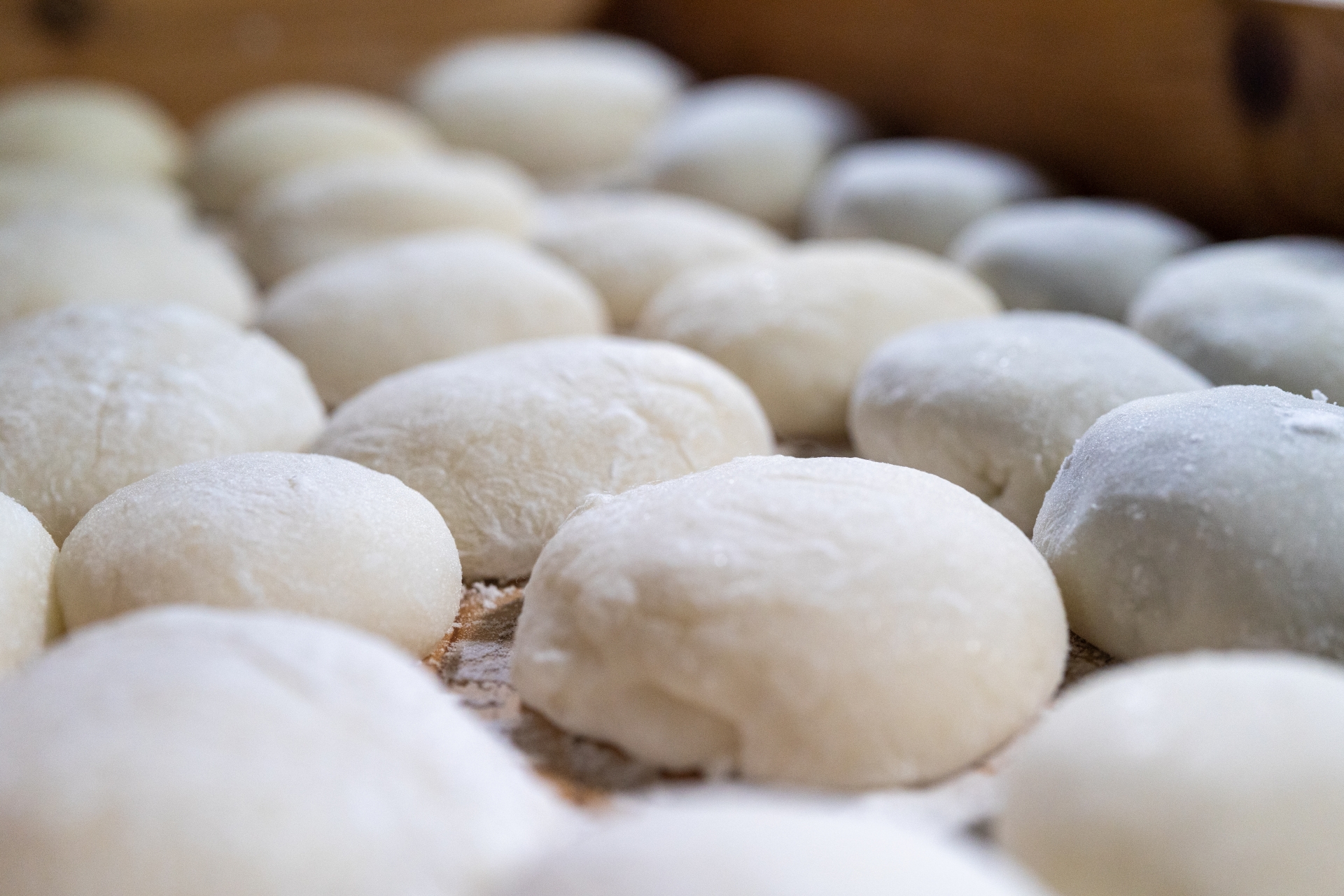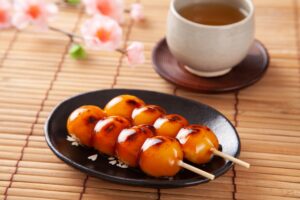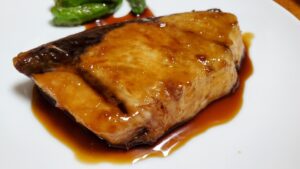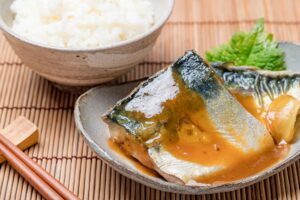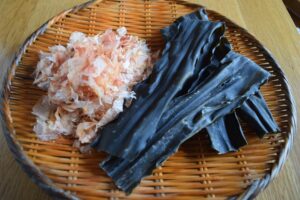Mochi, a beloved Japanese food, has captivated people around the world with its unique texture and rich cultural history. From traditional varieties tied to festivals to innovative modern adaptations, there’s much to discover about this chewy, flavorful treat. This guide will walk you through some of the most popular types of mochi, how they’re made, and what makes each one special. Whether you’re a food enthusiast or simply curious about Japanese cuisine, this comprehensive guide will offer insights into the fascinating world of mochi.
What is Mochi? An Introduction to Japan’s Beloved Treat
Mochi is a traditional Japanese food made from glutinous rice, known for its stretchy and chewy texture. The process of making mochi involves steaming glutinous rice until soft and then pounding it into a smooth, sticky dough. This dough is then shaped into small cakes or molded around various fillings.
Mochi holds deep cultural significance in Japan, especially during New Year celebrations, where it symbolizes longevity, health, and prosperity. The act of making mochi, or mochitsuki, is often a community event during these times. Aside from New Year’s, mochi plays a key role in various festivals and ceremonies throughout Japan.
While the basic ingredients remain simple, mochi comes in countless forms, varying by region, preparation method, and flavor. From sweet to savory, mochi’s versatility has allowed it to be embraced not only across Japan but around the globe.
Traditional Types of Mochi in Japan
Mochi has been a staple in Japanese cuisine for centuries, and its traditional forms reflect the rich cultural heritage of the country. Each type of mochi holds a special place in Japanese festivals, holidays, and everyday life. From sweet treats to savory dishes, these traditional varieties showcase the diverse ways mochi is enjoyed across Japan. Let’s explore some of the most beloved and iconic types of mochi that have stood the test of time.
Daifuku: The Iconic Mochi

Daifuku is one of the most iconic types of mochi and is traditionally filled with sweetened red bean paste, or anko. Its soft, chewy texture makes it a popular snack, both in Japan and abroad. Over time, variations of Daifuku have emerged, such as Ichigo Daifuku, where a fresh strawberry is placed inside, or versions filled with custard, ice cream, or other sweet delights. The combination of different fillings creates a unique texture and flavor, making Daifuku a beloved treat for all ages.
Warabi Mochi: A Delicate Jelly-like Treat
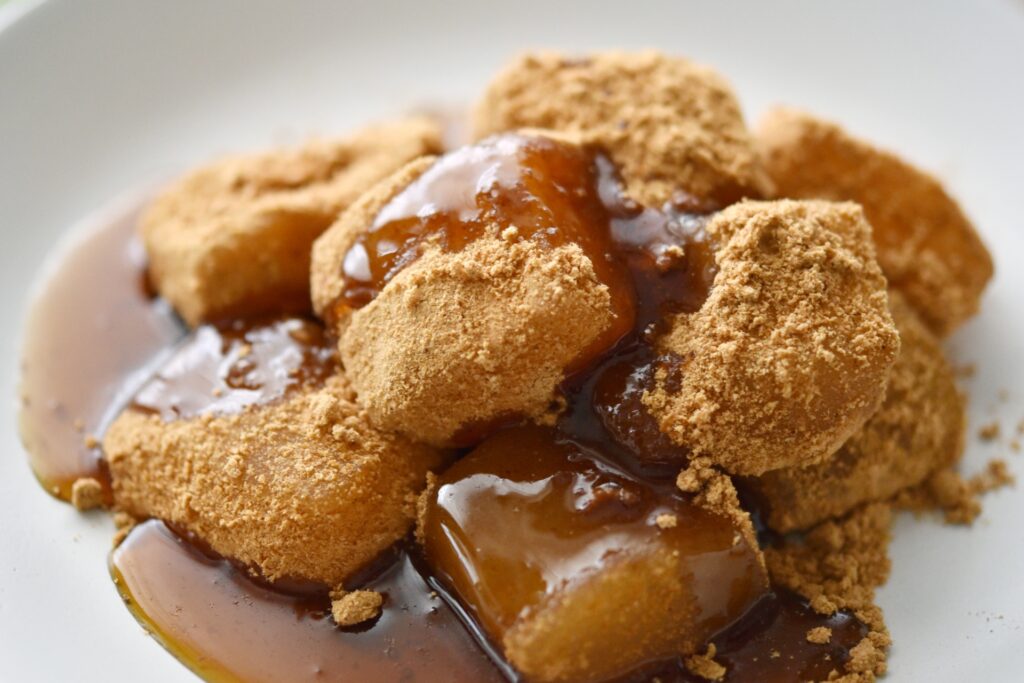
Unlike typical rice-based mochi, Warabi Mochi is made from bracken starch, giving it a jelly-like consistency. It’s a popular summer dessert, often dusted with kinako (roasted soybean flour) and served with a drizzle of kuromitsu (brown sugar syrup). Its light and refreshing texture make it a favorite during the warmer months. Though its consistency differs from traditional mochi, Warabi Mochi remains a staple in Japanese sweets.
Sakuramochi: A Taste of Spring
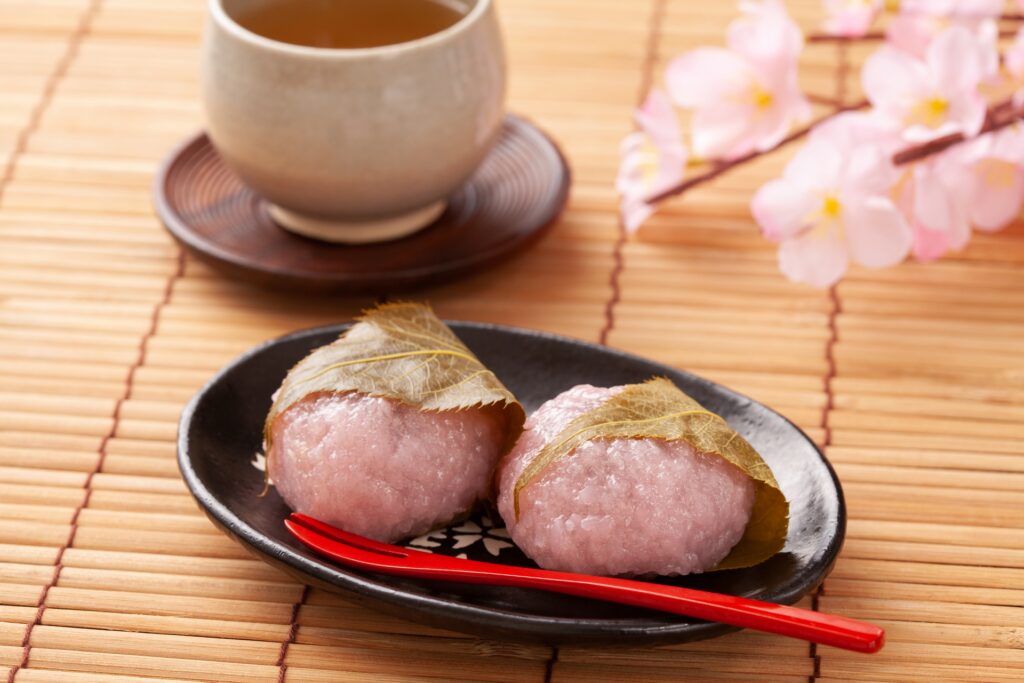
Sakuramochi, enjoyed during springtime festivals like Hinamatsuri (Girls’ Day), is a seasonal mochi wrapped in a pickled cherry blossom leaf. This gives the mochi a subtly sweet and salty flavor combination. Regional variations exist, with the Kanto region using a smooth rice flour-based domyoji, while in Kansai, it’s made with whole rice grains. The delicate flavors of Sakuramochi evoke the essence of Japanese spring.

Kiri Mochi: The Versatile Mochi
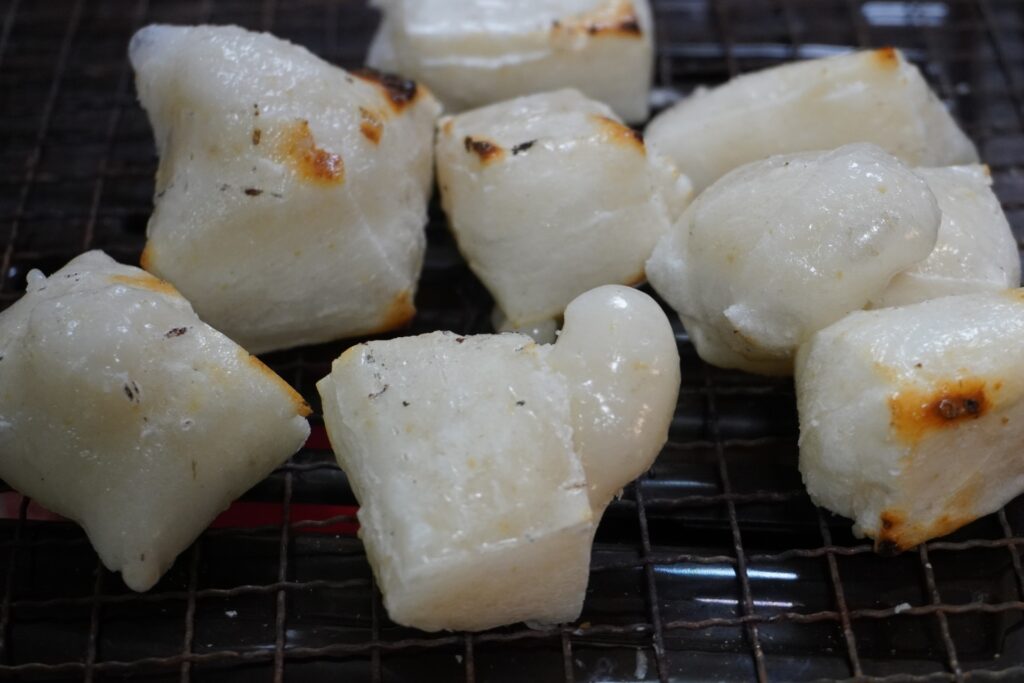
Kiri Mochi, unsweetened and cut into blocks, is a pantry staple in many Japanese households. It is often grilled or added to soups like ozoni, a traditional New Year’s dish. Kiri Mochi can be enjoyed in both savory and sweet forms, seasoned with soy sauce or topped with sugar and kinako. Its long shelf life and versatility make it a go-to ingredient for many dishes.
Yatsuhashi: A Unique Kyoto Specialty
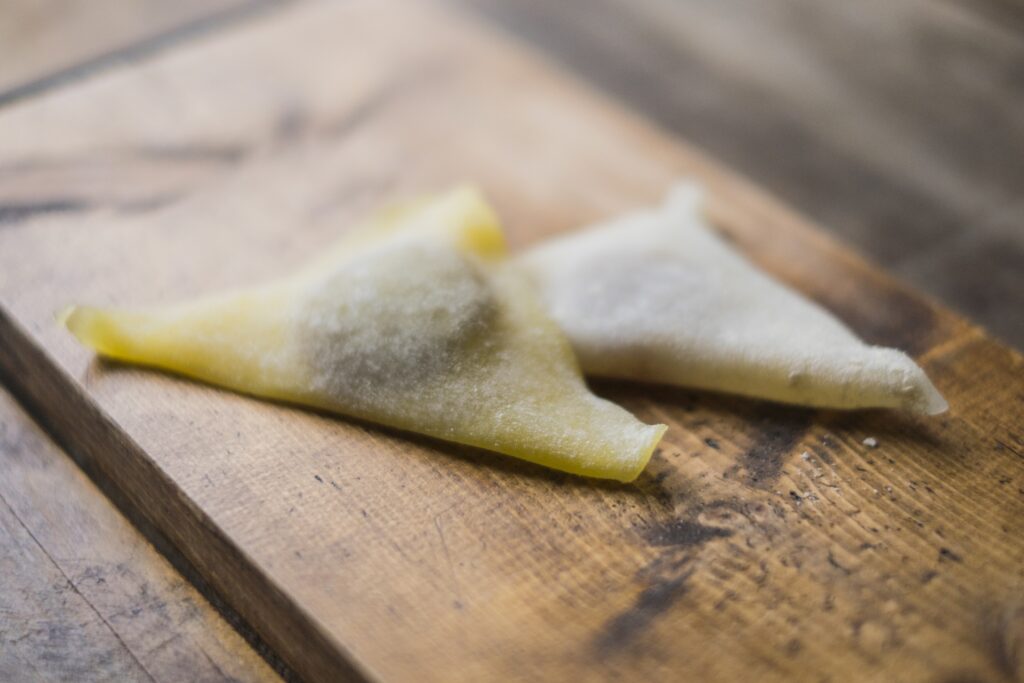
Yatsuhashi is a Kyoto specialty known for its distinct cinnamon flavor. It comes in two varieties: raw Yatsuhashi, a soft mochi, and baked Yatsuhashi, which has a crispy, cookie-like texture. Both are popular souvenirs from Kyoto and are often filled with anko. The unique flavor and texture of Yatsuhashi have earned it a place among Japan’s most beloved regional sweets.
Modern Varieties of Mochi
As mochi has gained popularity around the world, modern interpretations of this traditional Japanese treat have emerged. These new varieties often blend traditional mochi with contemporary flavors and culinary trends, offering fresh and exciting ways to enjoy the classic rice cake. From fusion desserts like mochi ice cream to innovative creations like mochi waffles, modern mochi continues to evolve while maintaining its chewy, beloved texture. Let’s explore some of the most popular modern mochi varieties that have captivated food lovers everywhere.
Mochi Ice Cream: A Fusion Favorite

Mochi ice cream is a modern fusion dessert that combines traditional mochi with a Western twist. It consists of a thin layer of mochi encasing a ball of ice cream, creating a delightful contrast between the cold ice cream and chewy mochi. Available in a variety of flavors, from matcha and red bean to chocolate and vanilla, mochi ice cream has gained popularity both in Japan and internationally.
Moffle: Mochi Waffles

Moffle, a creative hybrid of mochi and waffles, is made by pressing mochi in a waffle iron. The result is a crispy exterior with a chewy interior, offering endless possibilities for toppings, both sweet and savory. Moffle can be enjoyed with syrup, fruits, or even savory options like cheese and seaweed, making it a versatile dish that appeals to a variety of tastes.
How to Make Mochi at Home: A Simple Guide
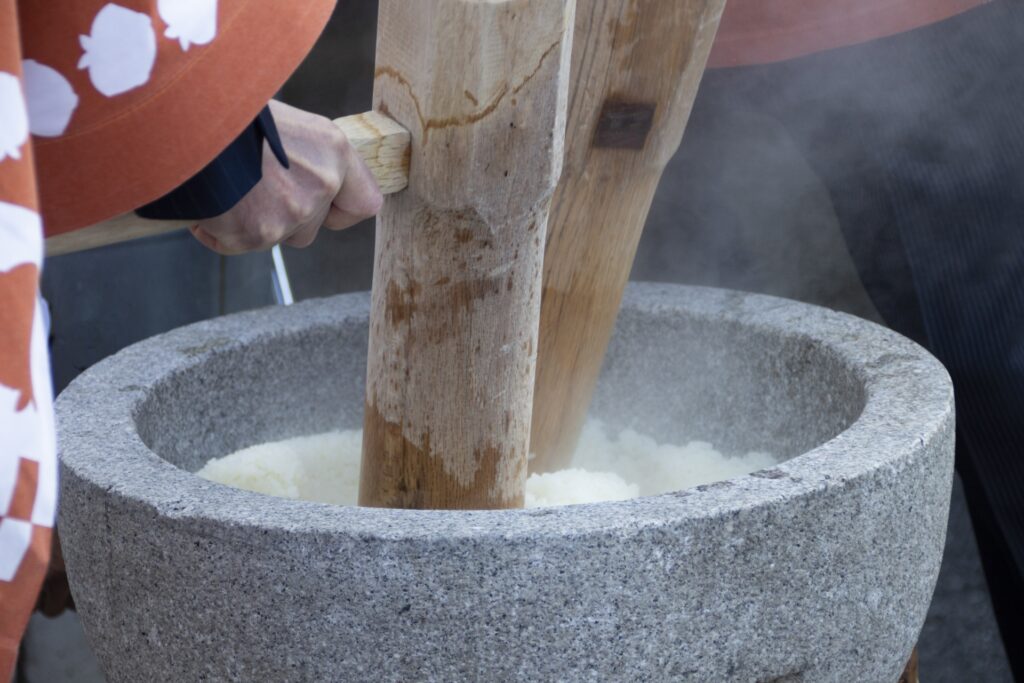
Making mochi at home can be a rewarding experience. Start by steaming glutinous rice until soft and sticky, then pound it into a smooth, elastic dough. Once the dough is ready, it can be shaped into small cakes or filled with your choice of fillings, such as sweet bean paste, fruit, or ice cream. To make the process easier, there are also modern appliances like mochi machines that automate the pounding process.
Storing and Serving Mochi: Best Practices
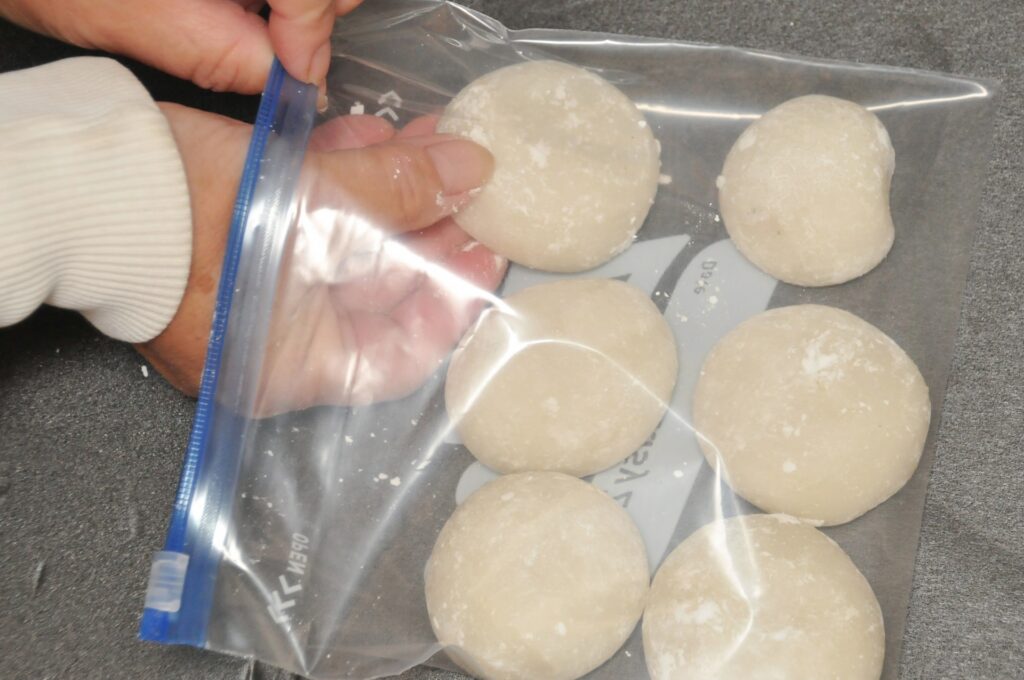
To maintain its texture, mochi should be stored carefully. Fresh mochi can be kept at room temperature for a short period but is best refrigerated or frozen for longer storage. When freezing, ensure the mochi is wrapped tightly to avoid freezer burn. To serve, thaw frozen mochi at room temperature or lightly toast it for a crispy exterior. Mochi pairs well with toppings like kinako, sugar, or even savory ingredients like soy sauce and seaweed.

